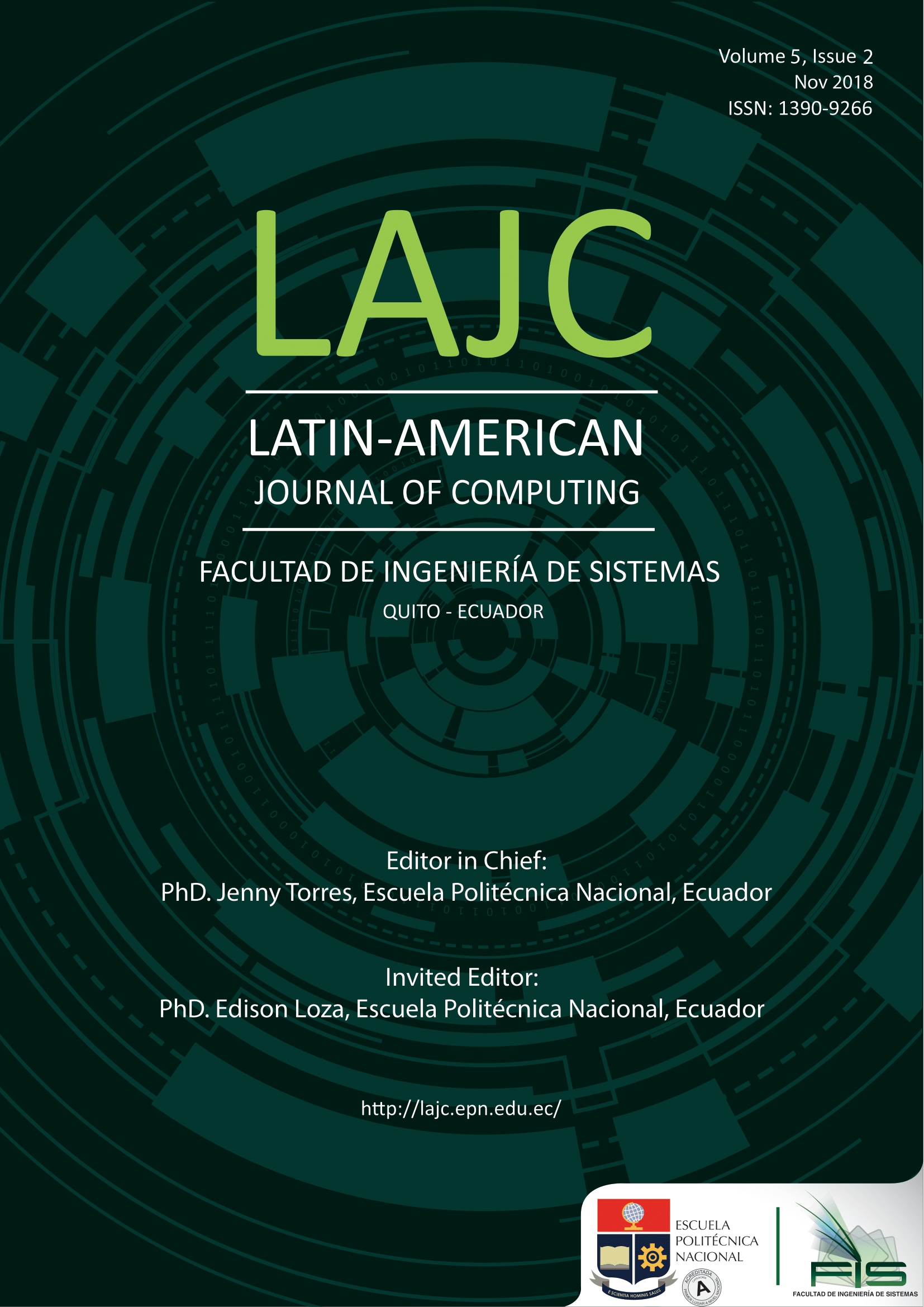Assisted Muscular Rehabilitation
Palabras clave:
muscular biofeedback, electromyography, muscular fatigue, muscular force, MVIC, Myoware Muscle Sensor, sEMG.Resumen
In the market, there are very sophisticatedbiofeedback tools, such as those developed by meyerPT [1] orBiometric Ltd. [2], which provide information to the patientthrough tones and allows the generation of records and show datain real time. However, the cost of these tools makes difficult theaccess to them. This problem is what make the patients apply tothe expertise of a specialist and a qualitative valuation. For thisreason, this project focused on developing a friendly userbiofeedback interface created in MATLAB, which brings valuableinformation about muscular signals generated by the human bodyto avoid the subjectivity that may exist in the traditional method,reaching better results in less time thanks to the continuemonitoring and data recorders. The interface shows visualindicators, which are used to feedback the patient, in order topresent the execution of the muscular exercises at a certain forceintensity, analyses the muscular fatigue during the training andcreate a data record to identify the evolution of the muscleaccording to the developing of the therapy sessions.
Descargas
Referencias
meyerPT, "meyerPT," Prometheus Group, [Online]. Available: https://www.meyerpt.com/pathway-mr-20-emg-system. [Accessed 3 Octubre2018].
B. Ltd, "Biometric Ltd," Biometric Ltd, 2015. [Online]. Available: http://www.biometricsltd.com/systems-emg.htm. [Accessed 3 Octubre 2018].
H. S. W. H. A. Hüter-Becker, Fisiología y teoría del entrenamiento, Badalona: Paidotribo, 2006.
I. Khazan, The clinical handbook of biofeedback: a step by step guide for trainig and practice with mindfulness, Chichester: Wiley-Blackwell, 2013.
A. Karatsidis, R. Richards, J. Konrath, J. van den Noort, M. Schepers, G. Bellusci, J. Harlaarand P. Veltink, "Validation of wearable visual feedback for retraining foot progression angle using inertial sensors and an augmented reality headset," Journal of NeuroEngineering and Rehabilitation, 2018.
A. McIntosh, Vignais, Nicolas and E. Biddiss, "Biofeedback interventions for people with cerebral palsy: a systematic review protocol," Systematic Reviews, 2017.
K. West, Biofeedback, New York: CHELSEA HOUSE, 1990.
C. Jaramillo, Diseño e implementación de un sistema de electromiografía computarizada, Sangolquí, 2015.
J. Basmajian and C. De Luca, Muscles Alive-their functions revealed by electromyography, Baltimore: Williams & Wilkins, 1985.
C. De Luca, Surface electromyography: detection and recording, DelSys Incorporated, 2002.
A. Technologies, Myoware Muscle Sensor, Advancer Technologies, 2016.
I. Cifuentes, Diseño y construcción de un sistema para la detección de señales electromiográficas, Yucatán, 2010.
Arduino, "Arduino," Arduino, [Online]. Available: https://store.arduino.cc/usa/arduino-uno-rev3. [Accessed 13 Marzo 2018].
C. A. Alva Coras, Procesamiento de señales dde electromiografía superficial para la detección de movimieno de dos dedos de la mano, Lima, 2012.
J. Brazeiro, S. Petraccia and M. Valdés, Mano controlada por señales musculares, Montevideo, 2015.
P. Konrad, The ABC of EMG A practical Introduction to Kinesiological Electromyography, Scottsdale: Noraxon, 2006.
S. Day, Important Factors in Surface EMG Measurement, Calgary: bortec biomedical.
M. Halaki and K. Ginn, "Normalization of EMGSignals: To Normalize or Not to Normalize and What to Normalize to?," INTECH, 2012, pp. 175-194.
D. Meldrum, E. Cahalane, R. Conroy, D. Fitzgerald and O. Hardiman, "Maximum voluntary isometric contraction: Reference values and clinical application," Amyotrophic Lateral Sclerosis, no. 8, pp. 47-55, 2007.
S. Salvesen, The effect of maximal vs. Submaximal contractions on crossover fatigue between limbs, Trondheim, 2017.
J. de las Heras, Implementación de métodos para medir la fatiga muscular en cirujanos a través de electromiografía, Cantabria, 2016.
J. Correa, E. Morales, J. Huerta, J. González and C. Cárdenas, "Sistema de Adquisición de Señales SEMG para la Detección de Fatiga Muscular," Revista mexicana de ingeniería biomédica, vol. 37, no. 1, 2016.
Descargas
Publicado
Número
Sección
Licencia
Aviso de derechos de autor/a
Los autores/as que publiquen en esta revista aceptan las siguientes condiciones:
- Los autores conservan los derechos de autor y ceden a la revista el derecho de la primera publicación, con el trabajo registrado con la Creative Commons Attribution-Non-Commercial-Share-Alike 4.0 International, que permite a terceros utilizar lo publicado siempre que mencionen la autoría del trabajo y a la primera publicación en esta revista.
- Los autores pueden realizar otros acuerdos contractuales independientes y adicionales para la distribución no exclusiva de la versión del artículo publicado en esta revista (p. ej., incluirlo en un repositorio institucional o publicarlo en un libro) siempre que indiquen claramente que el trabajo se publicó por primera vez en esta revista.
- Se permite y recomienda a los autores a compartir su trabajo en línea (por ejemplo: en repositorios institucionales o páginas web personales) antes y durante el proceso de envío del manuscrito, ya que puede conducir a intercambios productivos, a una mayor y más rápida citación del trabajo publicado.
Descargo de Responsabilidad
LAJC en ningún caso será responsable de cualquier reclamo directo, indirecto, incidental, punitivo o consecuente de infracción de derechos de autor relacionado con artículos que han sido presentados para evaluación o publicados en cualquier número de esta revista. Más Información en nuestro Aviso de Descargo de Responsabilidad.










